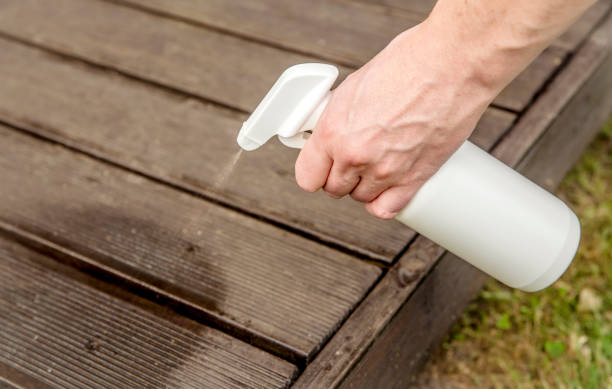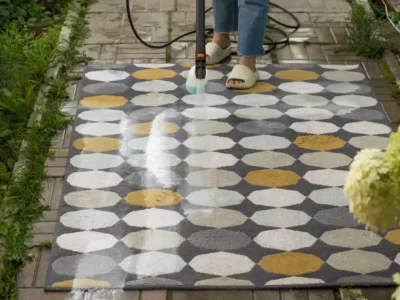Even though earwigs look very fierce with their pincers, they really aren’t the type of insect that is bent on destruction. If you happen to have earwigs in your home and you need pest control in Oroville you can click here for information to receive some assistance.
Earwigs are very hungry insects, however, despite their intimidating name, they won’t feed on your hair or get inside your ears like some other kinds of invasive pests will. Usually, instead, they’ll make themselves a rather good home in your yard to feed on the plants, dead leaves, and mulch especially if you have a garden.
Earwigs can be found inside the home too though. And when that happens you usually need a professional to help get rid of them. But before we go any further you need to understand what an earwig is.
What Are Earwigs?
According to most pest control companies, there happen to be over 1,500 different species of earwigs, and about 20 exist in the United States alone. They usually range in size from about ¼ of an inch or 2 inches in length.
During dry weather, earwigs are essentially known to make their way inside areas that are quite moist. Most earwigs do have wings, unfortunately, which means they can fly but they aren’t really known for having very great flying skills so there’s no need to worry too much about that.
They are known for wanting to stay closer to the ground than anywhere else. If you’ve ever come in contact with an earwig, you probably found out that they do in fact pinch, but when they do attack by pinching they don’t emit any kind of poison and they typically don’t pinch hard enough to even break the skin.
There are certain species of earwigs that will release a foul-smelling liquid as a defense mechanism when they are attacked, so you should probably keep your distance.
Why Do Earwigs Invade Homes?
You will usually mostly find earwigs outdoors, crawling around areas that are moist like in your garden. They are actually known for being nocturnal insects that will take cover and hide in between cracks during the daytime. And you can always find them hanging out underneath rocks, logs, and mulch
These insects are especially attracted to lights, so you are likely to find them as visitors around your porch light at night or on your deck during a summer evening. If the earwigs do happen to make their way into your home, it’s most likely due to the weather changing outside.
Earwigs love to stay where it’s cool and damp if there happens to come a time when it gets too dry outside that’s when they typically make their way indoors specifically where there is a moist environment. Some places you can find earwigs include
- Bathroom
- Kitchen
- Laundry room
- Basement
Though earwigs can actually get into many other places in your home, it’s really not that common to have a large infestation like other pests. They much rather like to be outside in your garden munching on plants, flowers, and mulch. Therefore, the plants in your garden are at risk of being destroyed if you don’t eradicate these little insects from your yard too.
Signs You Might Have Earwigs
Like I mentioned before earwigs love damp and cooler environments, some places you can find them outdoors include the following:
- Under paving stones
- Inside of tree bark
- Cracks in the soil
- Buried deep inside of flowers
Therefore, it isn’t very likely you’ll have an infestation in your home, however, it does happen sometimes. Usually, there will only be a few here or there, not a large infestation like you would normally see with cockroaches or bedbugs.
If you do see a couple of these insects making their home inside of your house, there are some signs to indicate their presence, which include foul smells, the attraction to bright lights in your home, dead plants and leaves, and moist and cold locations.
How to Find Earwigs In Your Home
Even though the warm environment of your home isn’t ideal for earwigs, there’s still certainly a possible chance that they will enter your home without you being aware of them. Earwigs can crawl through really small cracks, gaps, and holes, therefore you should seal up any doors or windows that have poor sealing.
And you should secure unscreened vents and doors that lead to crawling spaces to keep them from making their way into your home. They can also make their way into your home unintentionally because they can be hidden inside bundles of newspapers, boxes, lumber, and plants. Therefore, you should always look through these items carefully before bringing them into your house.,
How to Find Earwigs In Your Garden
Typically earwigs won’t be that much of a risk to your garden unless you have an infestation of them. And since earwigs eat nothing but plant-based items your garden will be at risk for damage because they will eat your plants and vegetables and especially your flowers.
How to Kill Earwigs
When you realize you have an infestation of earwigs in your garden, you should try your best to eradicate them before they become a problem, essentially damaging your garden. There are several types of methods to kill earwigs, which include pesticides, and traps, and there are some natural ways to kill them too.
Pesticides: Outdoor insecticides can possibly contain sevin, pyrethrins, malathion, or diazinon. You should make sure you test a small amount on a single leaf before you drench your garden in it. And it’s best if you apply the treatment in the evening right before the earwigs start to feed.
Natural Methods: If you’d rather not use pesticides to kill the earwigs you can go a more natural route by using organic substances such as boric acid or diatomaceous earth. You simply just sprinkle some boric acid powder and diatomaceous earth on your garden or in places you think the earwigs are present which will kill them. However, if you have kids or pets make sure they don’t go anywhere near it, it can be harmful to them.




















